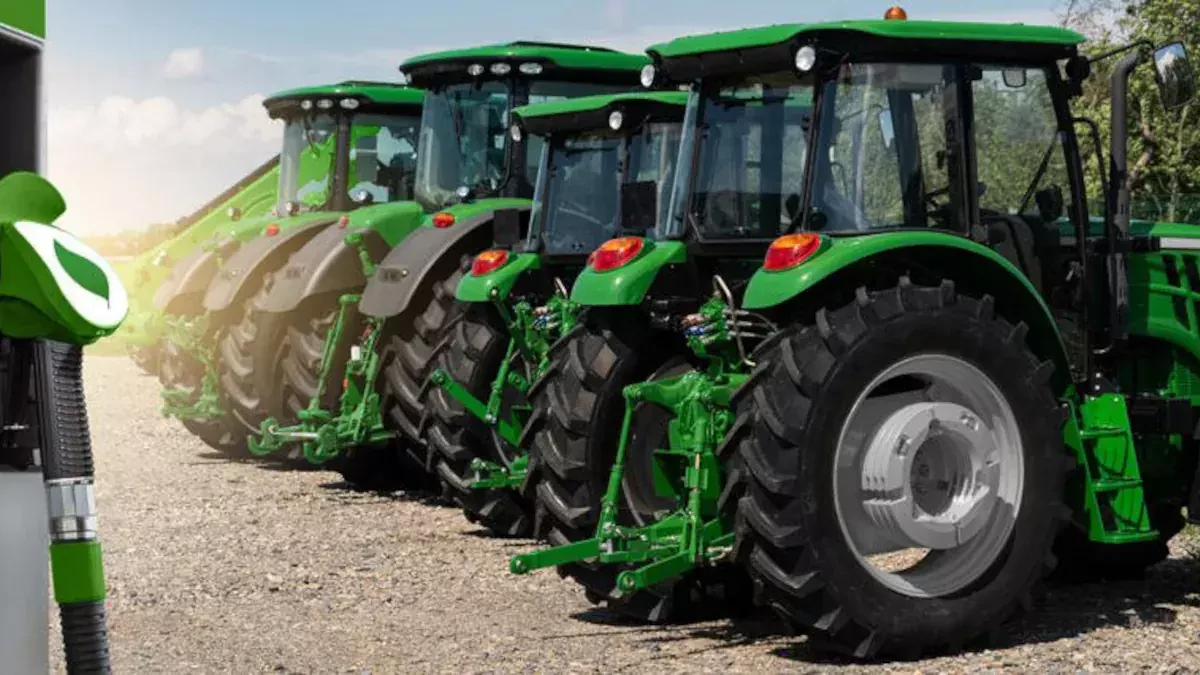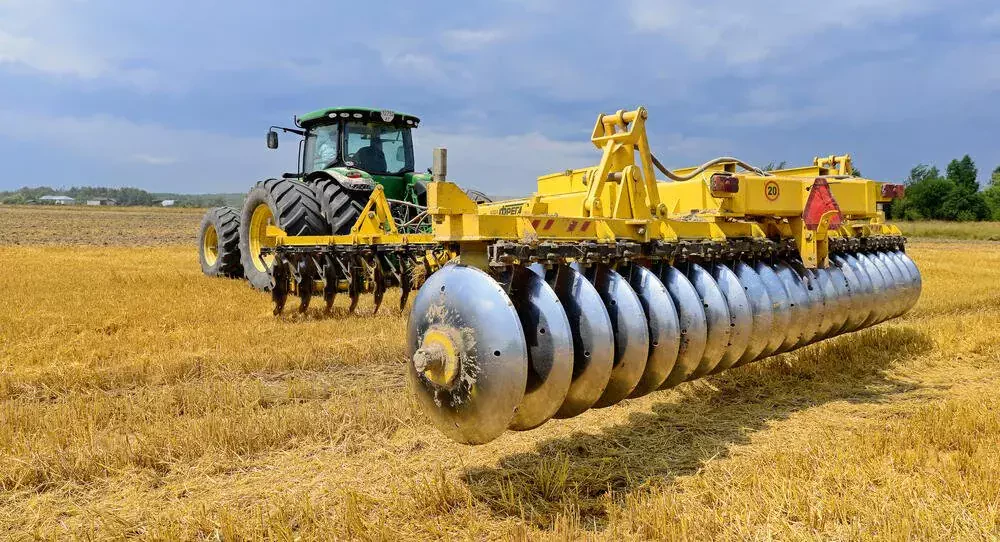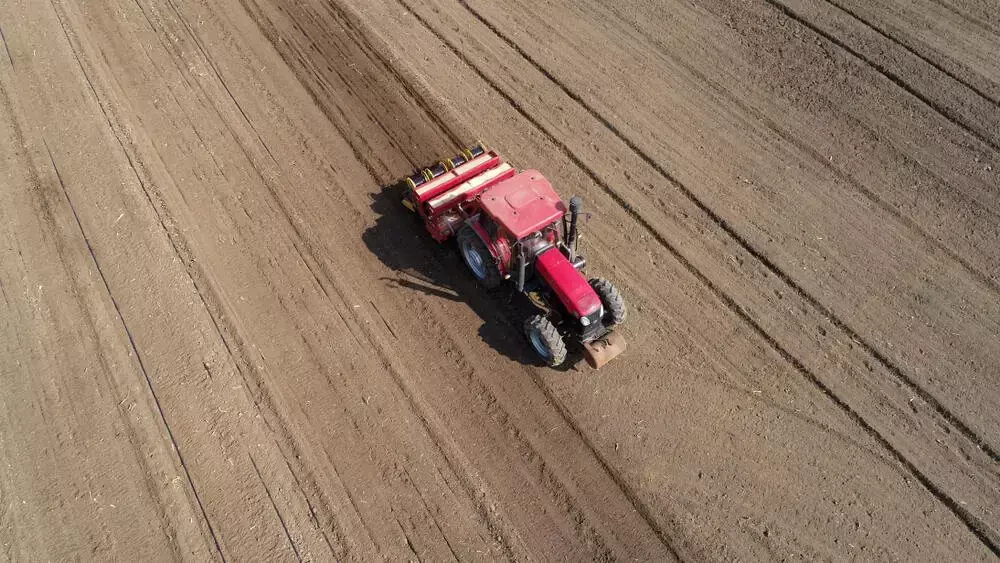How to Transport a Tractor: Hauling Tips (2022 Updated)


Hauling a tractor doesn’t have to be slow and dangerous. It shouldn’t be difficult to transport from one field to another.
But how do you transport a tractor without jeopardizing the safety of other vehicles on the highway?
Learn how to transport a tractor like a pro with these five easy tips.
How Much Does It Cost To Transport A Tractor?
Generally, you’ll pay between $2 to $3 per mile to ship a tractor. However, the cost of transporting a tractor varies depending on its size, weight, dimensions, shipping time frame, and point of distance.
Smaller tractors are easier to haul and ship, so their shipping will likely be less expensive than larger or bulkier tractors.
Trailers transporting your tractor may charge more depending on how heavy your tractor’s load is.
The longer the distance, the higher cost of shipping because it requires more expenses like additional gas and time to travel.
The delivery time frame also affects the cost of shipping. You’ll have to pay more if you want your tractor to be delivered in a shorter time. Rush hauling requires extra fees and expenses.
Container vs Open-Air Transport
If you want to save more money and aren’t afraid your tractor may get dirty along the way, open-air shipping is your best choice.
This shipping method is the simplest and cheapest way to transport your tractor.
Your tractor [2] will be shipped through a flatbed trailer, where it will be securely tied down using chains, straps, or fasteners.
Flatbed trailers are usually safe for transport; the only downside is that your tractor might be exposed to elements such as mud and dust.
Alternatively, your tractor can be shipped through a container.
This is more costly than open-air transport, but it can ship your tractor without exposing it to unwanted elements, even in direct sunlight.
This method is your best choice if you are after your tractor’s protection.

What Permits Are Needed To Transport A Tractor?
You might need to secure an oversize/overweight load permit if your tractor dimensions exceed the standard legal or federal limits.
The Department of Transportation (DOT) typically requires a load width of 8.5 ft, 13.5 ft for height, 65 ft in length, and up to 80,000 lbs.
However, these limits vary depending on the state, so we recommend working with your local DOT offices before the transportation.
You’ll also need Oversized/Overweight City and County permits if your tractor exceeds the load capacity. Some cities require permits to protect the city roads and other public properties.
In Conclusion
There are five easy steps to follow when transporting a tractor, locally or internationally.
First, you must know the local and state federal laws about shipping tractors. Then, choose the right transport vehicle and prepare and secure your tractor for transport.
We recommend hiring professional haulers like A-1 Auto Transport to ship your tractor to avoid all the hassle.
We work with experienced logistics specialists nationwide to ensure the safety of your equipment and machinery.
References:
Frequently Asked Questions
How do you transport a small tractor?
You can transport a small tractor using vehicles that can accommodate the size and weight of the machinery.
You can either transport it yourself or try to hire a professional transport delivery driver, abiding by the laws and regulations to transport it safely.
Can I use straps to tie down a tractor?
Yes, you can use straps to tie down a tractor during transport. Some hauling companies provide tie-downs and straps capable of restraining up to 46,000 lbs.
Heavy-duty straps ensure that your tractor has been loaded securely before and during transport.
How much does it cost to ship a tractor overseas?
The cost of shipping a tractor overseas may range from $3170 to $12890, according to Compare The Carrier’s website.
The rate for overseas transportation depends on the type of transportation required and the size of the vehicle, so it isn’t easy to estimate the cost without knowing the tractor model and the destination point.
1) Know State & Federal Regulations
The first thing one should consider before transporting a tractor is the state and federal regulations to follow.
Failure to comply with safety protocols can be dangerous, as it may seriously damage other vehicles, properties, or the tractor itself.
It’s also important to note that laws and regulations vary from one state to the other, especially if you plan to transport your tractor overseas.
Some states prohibit transporting tractors on highways, while some also have varying regulations about securing, loading, and unloading tractors to trailers.
Fun Fact: In New York, agricultural vehicles such as farm tractors between 12 feet and 17 feet in width are not permitted on highways, according to DOT.
2) Choose Your Transport Vehicle
The next thing you need to consider is choosing the best transport vehicle to haul your tractor.
Tractors are heavy machines not meant to travel long distances, so they cannot travel on highways, endangering other vehicles. Thus, you will need a trailer to haul it.
One of the best trailers to transport a tractor is a gooseneck trailer, which could range from 28’ to 36’ feet and can carry around 24,000 pounds.
Larger tractors may also be transported using flatbed trailers [1], properly secured using heavy-duty chains, fasteners, straps, and other shipping gear.
Tractors can also be transported using a skid steed trailer with 7’ x 20’ feet and a load capacity of 11,000 pounds.
3) Prepare Your Tractor For Transport
If you plan to haul your tractor using your own trailer, you must learn how to load and unload it securely.
You also must prepare the necessary permits whether you plan to transport them to other states or overseas.
4) Secure Your Vehicle

We suggest cleaning your tractor first by removing all your personal belongings, especially if you hired professionals to transport it for you or if you sold your tractor to someone else.
Washing your tractor and covering any vulnerable pieces are also recommended.
You must also drain the tanks after detaching the machine’s batteries and check the tractor’s condition.
Lastly, take photographs of your tractor before the transport as a shred of evidence about its current condition, in case something happened to it during transport.
5) Get Professional Help
Getting professional help could be your option if you don’t want any hassle transporting your tractor because the transport company will take care of everything for you.
They’ll provide an experienced driver to ensure the safe delivery of your tractor. You won’t also need to learn how to load and unload your tractor because the shipping manager and the driver will take care of it.
They will also prepare necessary permits to lawfully transport your heavy equipment from state to state or even overseas.


 Share on Facebook
Share on Facebook Share on LinkedIn
Share on LinkedIn Share on Twitter
Share on Twitter Google
Google  Instagram
Instagram 



